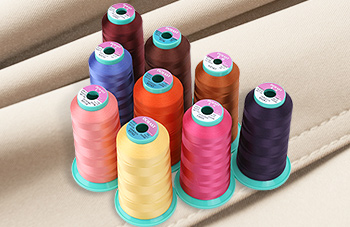Hand feeling visual method
The visual method of hand feeling is to touch with hands, observe with eyes, and judge the type of fibers by experience. This method is simple and does not require any equipment, but requires extensive experience in the discriminator.
1. Hand feel and strength: cotton and linen feel hard, while wool is soft. Silk, viscose, and nylon are moderate to the touch. When broken by hand, silk, hemp, and cotton are strong; wool and viscose are weaker.
2. Elongation: When stretching the fiber, the elongation of cotton and hemp is small; the elongation of wool and acetate fiber is longer; the elongation of silk, viscose, and most synthetic fibers is moderate.
3. Length and uniformity: The length and uniformity of natural fibers are poor, and the length and uniformity of chemical fibers are better. Cotton fibers are slender, soft, and short in length. Wool is long and curly, soft and elastic. Silk is long and slender, and has a special luster. Hemp fibers are gelatinous and hard.
4. Weight: cotton, hemp, viscose fibers are heavier than silk; nylon, acrylic, and polypropylene are lighter than silk; wool, polyester, and vinylon acetate fibers are similar in weight to silk.
Combustion method
Combustion method is one of the common methods for identifying yarns, and it uses the characteristics of textile fibers when they are burned for identification.
Cotton: It burns near the flame, burns quickly, has the smell of burning paper with residual ash, has very little ash, and is soft, black or gray.
Mao: Melted and burnt, difficult to continue burning, self-extinguishing, burning feathery smell, ash is brittle, brittle, black.
Silk: There is a slight sound when burning, it is difficult to continue burning, it will self-extinguish, and when burning, it splashes, burning feathers, and the ashes are brittle, brittle, and black.
Hemp: It burns near the flame, there is a crackling sound when burning, smoke continues to burn, there is residual ash, and the ashes are black or gray.
Viscose: It burns near the flame, the continuous burning is very fast, and there is no residual ash. The burning paper is mixed with the smell of chemicals.
Microscope observation
The natural fibers and chemical fibers can be more accurately distinguished by observing the shape and cross-sectional shape of the fibers with the help of a microscope, or with methods such as dyeing.
The longitudinal and cross-sectional morphological characteristics of commonly used fibers are as follows:
Cotton: Flat ribbon with natural twist, rounded waist and center control.
Wool: Scaled on the surface, round or nearly round, some with pith.
Mulberry silk: straight, irregular triangular.
Ramie: horizontal knots, vertical lines, waist-shaped, with central control and cracks.
Viscose: grooved longitudinally and hooked to form a multi-leafed edge.
Polyester, nylon: smooth, round.
Acrylic: smooth or with one or two grooves, close to round.

Zhejiang Doeast Thread Co.,ltd. is famous China cotton sewing thread manufacturers and high elastic sewing thread factory. Company specializing in the production and sales of all types of industrial sewing thread, variety anddiverse, covering almost the market required all sewing thread category, mainly related to polyester, nylon and cotton sewing thread.Different categories of product thickness range can meet the various needs of different thickness offabrics and sewing operations. Suitable for using in all kinds of knitted and woven fabrics and leather.

Zhejiang Doeast Thread Co.,ltd. is famous China cotton sewing thread manufacturers and high elastic sewing thread factory. Company specializing in the production and sales of all types of industrial sewing thread, variety anddiverse, covering almost the market required all sewing thread category, mainly related to polyester, nylon and cotton sewing thread.Different categories of product thickness range can meet the various needs of different thickness offabrics and sewing operations. Suitable for using in all kinds of knitted and woven fabrics and leather.

 English
English Chinese
Chinese Japan
Japan


